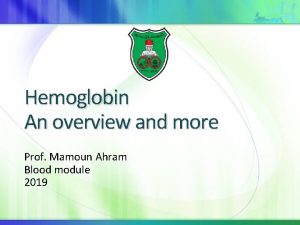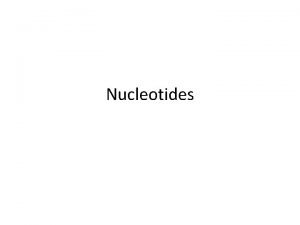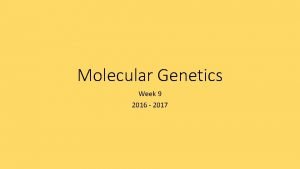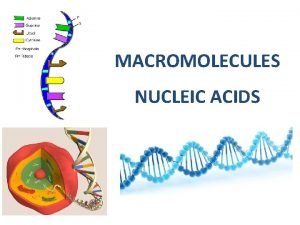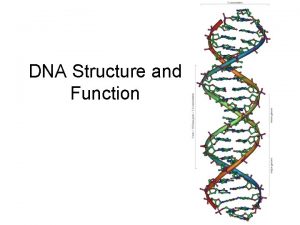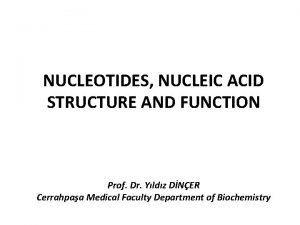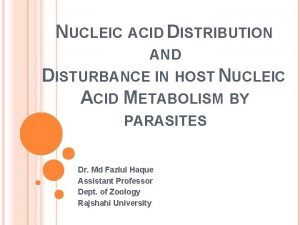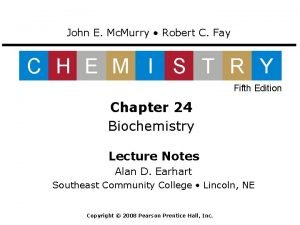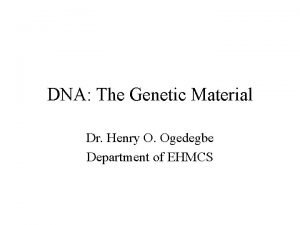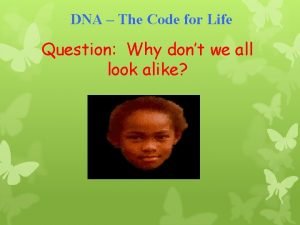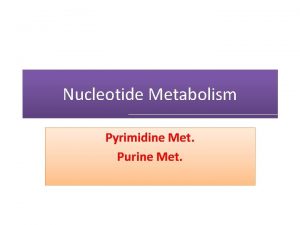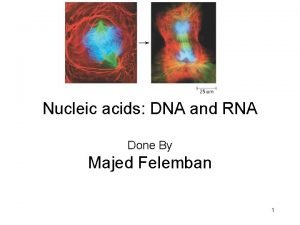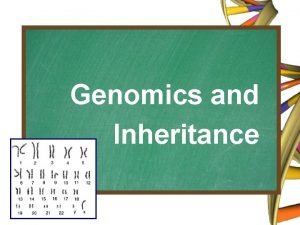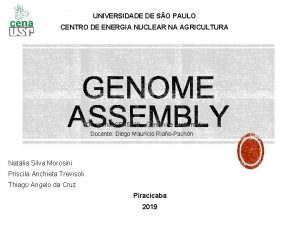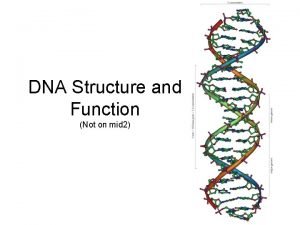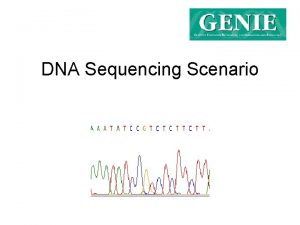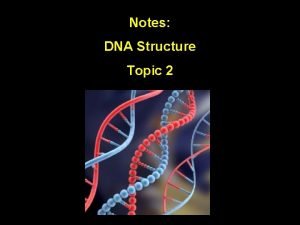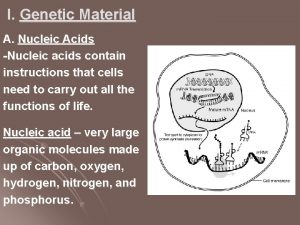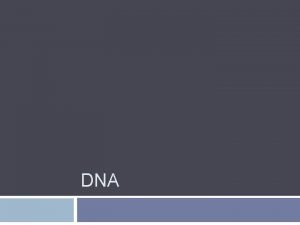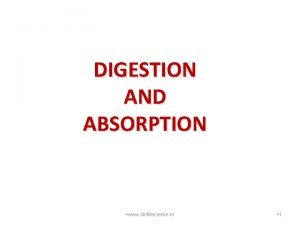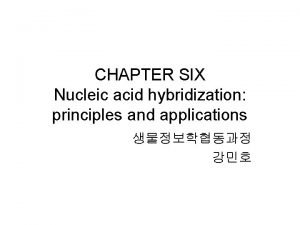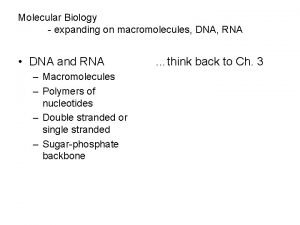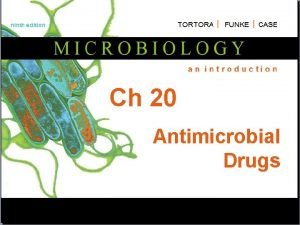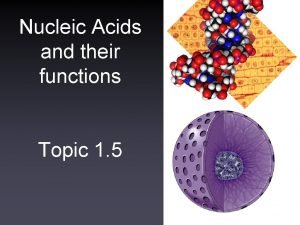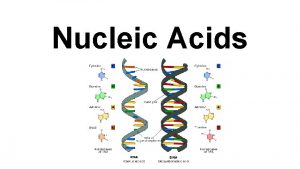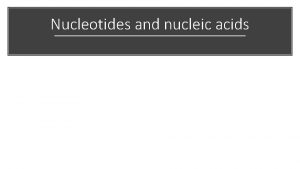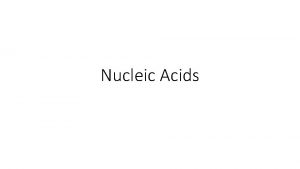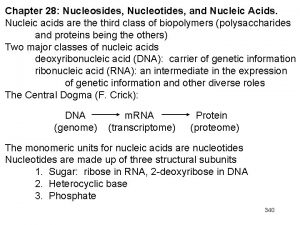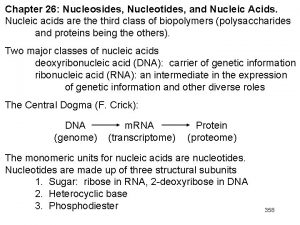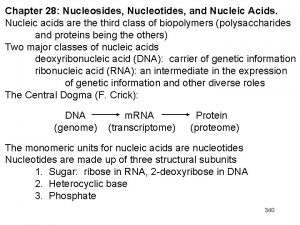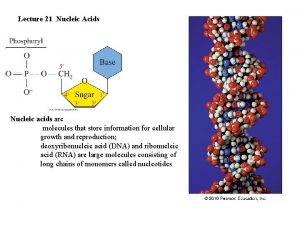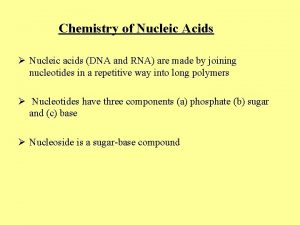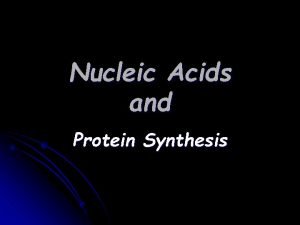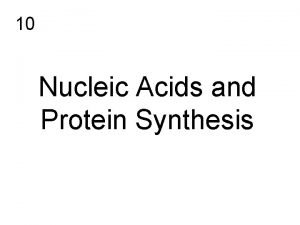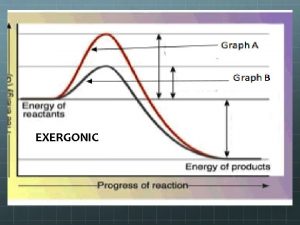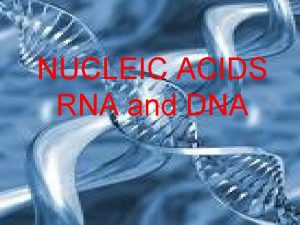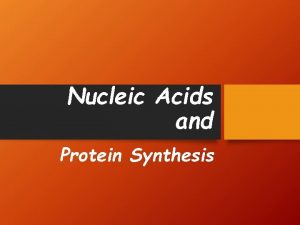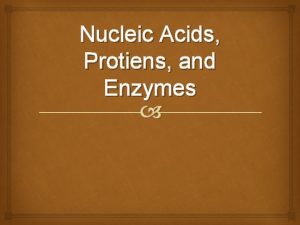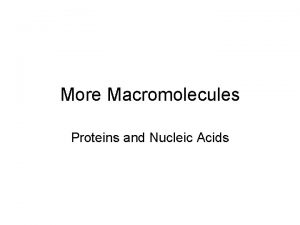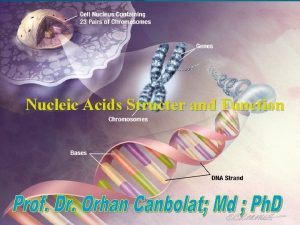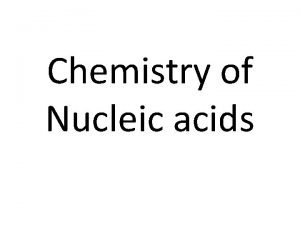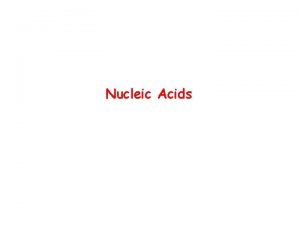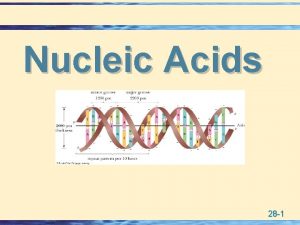Nucleotides and nucleic acids Lecture 5 Dr Mamoun




































- Slides: 36

Nucleotides and nucleic acids Lecture 5 Dr. Mamoun Ahram

Nucleic acids • Monomers • Polymers

Chemical composition and bonds

DNA vs. RNA

Nitrogenous bases

Other nucleotides • Xanthine, hypoxanthine and uric acid – intermediates in purine metabolism) • N 6 -methyl adenine • 5 -methyl-cytosine and N 4 -methyl cytosine • pseudouracil – has the ribose attached to C 5 instead of N 1 of uracil – Pseudouridine • 1, 3, 7 -trimethylxanthine (caffeine)


Nucleotides are acidic

Nucleotides vs. Nucleosides



Nucleic acid polymer

A new era

DNA structure • • A double helix Backbone vs. side chains Antiparallel Specific base-pairing – Chargaff's rules Stable Flexible Groovings Stability vs. flexibility • Chargaff's rules 14

Chemical forces • • Ionic interactions Hydrogen bonds van der Waals interactions Hydrophobic interactions (Base stacking) • Both van der Waals and hydrophobic interactions drive the formation of DNA (and RNA) double helices

B-DNA

Other forms

Chromosomal packaging • 2 meters of DNA/cell – 40 km of thread in a tennis ball! • How? – Histones •

What is a chromatin? • Chromatin = DNA molecule + proteins • The proteins that bind to the DNA: – histones (H 1, H 2 A, H 2 B, H 3, and H 4) – nonhistone chromosomal proteins

Nucleosomes

Chromatosome • H 1 is bound to the DNA forming with the octamer and wrapped DNA a chromatosome

DNA-histone interaction • Histones are positively charged – Interaction – Charge neutralization

RNA • Vs. DNA • Secondary structures

Molecular processes

Types of RNA Messenger RNA (m. RNA) • Localization • Modification • Variable size

Types of RNA Ribosomal RNA (r. RNA) • Ribosomal RNA molecules comprise 65 to 70% of the mass of the ribosome • The r. RNA maintains the structure of the ribosome and provides sites for the binding of m. RNA and protein synthesis

Types of RNA Transfer RNA (t. RNA) • t. RNA is a ~75 base molecule that carries the amino acids, and transfers them to the growing protein • t. RNAs have a common tertiary structure

Modified nucleotides in t. RNA • t. RNAs contain modified bases

Other RNA molecules • Small nuclear RNA (sn. RNA) – RNA processing • Micro. RNA (mi. RNA) – Natural – translation regulation • Small interfering RNA (si. RNA) – Synthetic – Translation regulation

Light absorbance of nucleic acids • Aromatic pyrimidines and purines can absorb UV light • The peak absorbance is at 260 nm wavelength

The unit of absorbance • The absorbance of 260 nm (A 260) is constant – ds. DNA: A 260 of 1. 0 = 50 ug/ml – ss. DNA: of 1. 0 = 30 ug/ml – ss. RNA: A 260 of 1. 0 =40 ug/ml

Exercise What is the concentration of a double stranded DNA sample diluted at 1: 10 and the A 260 is 0. 1? DNA concentration = 0. 1 x 10 x 50 µg/ml = 50 µg /ml

Denaturation-renaturation

Observation of denaturation

Factors influencing Tm • • G·C pairs p. H Salt and ion concentration Destabilizing agents (alkaline solutions, formamide, urea)

G-C content
 Mamoun ahram
Mamoun ahram Mamoun ahram
Mamoun ahram Biological importance of nucleotides
Biological importance of nucleotides Hydoxyle
Hydoxyle What is an anticodon
What is an anticodon The building block of nucleic acid.
The building block of nucleic acid. Nucleic acid structure
Nucleic acid structure Function of nucleic acid
Function of nucleic acid Nucleic acid made up of
Nucleic acid made up of Nucleic acids
Nucleic acids Function of a nucleotide
Function of a nucleotide Nucleic acids
Nucleic acids Function of nucleic acids
Function of nucleic acids Nucleic acid foods
Nucleic acid foods Nucleic acids
Nucleic acids Nature of nucleic acid
Nature of nucleic acid When dna untwists, unzips, and nucleotides fill in.
When dna untwists, unzips, and nucleotides fill in. 01:640:244 lecture notes - lecture 15: plat, idah, farad
01:640:244 lecture notes - lecture 15: plat, idah, farad Pyrimidine synthesis pathway
Pyrimidine synthesis pathway Nucleotide sequence vs amino acid sequence
Nucleotide sequence vs amino acid sequence Four nucleotides of dna
Four nucleotides of dna Order of nucleotides in dna
Order of nucleotides in dna Nucleotides wiki
Nucleotides wiki Why dna is negatively charged
Why dna is negatively charged Nucleotides wiki
Nucleotides wiki Dna secret code
Dna secret code Nucleotide structure labeled
Nucleotide structure labeled Nucleic acid made up of
Nucleic acid made up of What is nucleic acid composed of
What is nucleic acid composed of Small blind meaning
Small blind meaning Nucleic acid hybridization principle
Nucleic acid hybridization principle Nucleic acid chart
Nucleic acid chart Beta-lactam-resistant pathogens
Beta-lactam-resistant pathogens Nucleic acid monomer
Nucleic acid monomer Nucleic
Nucleic Nucleic acid test
Nucleic acid test Infectious nucleic acid
Infectious nucleic acid
